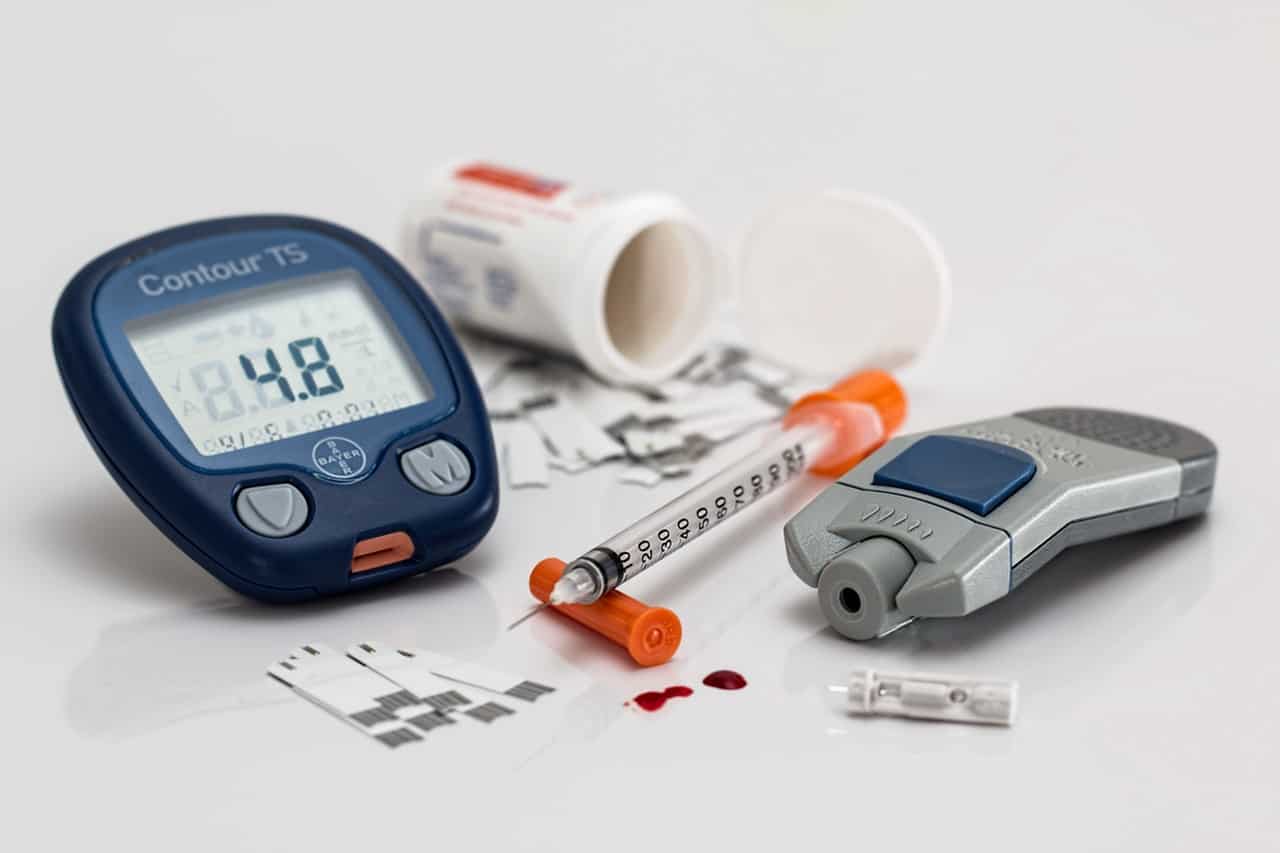Having high blood sugar is often talked about on television and in printed materials because of its prevalence. However, low blood sugar levels are a problem too. Hyperglycemia occurs when the body has too much glucose in the bloodstream; hypoglycemia is the opposite.
There is a wide misconception that people who have diabetes also have hypoglycemia. If a person is treating their diabetes with medication or insulin, their sugar can drop too low, resulting in this medical emergency. However, it can occur naturally, also.
When your body cannot stabilize blood sugar levels, then it’s a dangerous situation. When it comes to glucose, you can go to the extreme on both ends of the spectrum. It’s more common for a person to suffer from high blood sugar rather than low glucose, but it does happen.
The 15 Symptoms of Low Blood Sugar
Your blood sugar levels go up and down all day. When you eat, your pancreas kicks into overdrive, sending insulin to combat the sugars. It uses some for energy and flushes the rest.
The problem with high blood sugar is that it’s absorbed into the body and not appropriately flushed. Another issue is that when a person is obese, the fat cells absorb the sugar, and the pancreas cannot produce enough insulin to wash the glucose.
In low blood sugar, a person’s body isn’t making enough insulin. Whether too high or too low, you need to watch for warning signs that your blood sugar levels are off. Here are some of the most observed symptoms that you should never ignore:
- Overwhelming Feeling of Hunger
- Dizziness
- Extreme Headaches
- Confusion or Disorientation
- Loss of Concentration
- Shaking or Feeling Unwell
- Sweating
- Vision Changes
- Mood or Personality Differences
- Feeling Faint
- Heart Palpitations
- Depression
- Unexplained Weakness
- Nightmares
- Crawling Sensations on Your Skin
Did you know that many people have hypoglycemia unawareness? They go for months or even years with this condition and have no clue they have an issue. Everyone reacts differently to the shifts in your glucose, and it depends on how low it goes as to the symptoms you will experience.
Many people don’t know they have a problem because of their low levels, but they are not low enough to bring about symptoms.
Causes of Hypoglycemia
Low blood sugar levels are divided into two categories, reactive and non-reactive. It’s essential to understand which one you have so that you know how to treat it.
• Reactive
Reactive hypoglycemia is the most common type observed. It occurs hours after your last meal. The person suffering from this condition has a pancreas that is making too much insulin for their body to use.
Those who have reactive variety are at an increased chance of developing diabetes.
• Non-Reactive
Non-reactive hypoglycemia has nothing to do with your food consumption. Rather, this condition is triggered by an underlying illness. It can be caused by prescriptions used to treat kidney disease.
If a person drinks too much alcohol regularly, the liver becomes diseased and cannot assist in your digestion. Since the liver is responsible for making glucose, the impairment causes a deficit in the body.
Other conditions that can affect blood sugar levels are illnesses that affect the heart, pregnancy, or eating disorders like anorexia or bulimia.
In some situations, a tumor can occur in the pancreas that causes it to malfunction. The tumor causes this organ to produce a substance that is like insulin, but it’s not. However, the body cannot tell the difference between the substances, and low blood sugar develops.
Hormonal issues can also alter blood sugar levels and cause a person to be insulin resistant, like those with a polycystic ovarian syndrome or PCOS.
• Dumping Syndrome
Dumping syndrome occurs when a person has had stomach surgery. Altering the stomach for weight loss or to combat GERD can change everything. What is dumping syndrome?
When a person eats sugary carbohydrate foods in abundance, the stomach becomes irritated. The body will try to get rid of this excessive sugar by creating more insulin. However, it can cause you to get sick and vomit or have diarrhea and severe cramping.
Even worse, you can develop low blood sugar if you keep eating unhealthy foods. You must pay special attention to what you eat if you’ve had stomach surgery as you are at risk.
Developing Low Blood Sugar without Diabetes
Low levels of sugar can occur in adults and children alike. Those who have hypoglycemia are at an increased risk if they have these issues
•Overweight or Obese
•Family History
•Comorbidities
•Previous Stomach Surgeries
Keep in mind that just because you are predisposed to have diabetes or are considered a prediabetic doesn’t mean that you will develop this condition. You can make many changes in your life, including diet and exercise, that can keep this disease at bay.
In many cases, you can stop the progression from prediabetic to diabetic. Studies show that if you would exercise just 30 minutes a day, that you can reduce the chances of getting diabetes by up to 58 percent.
Diagnosing Low Blood Sugar
Low levels of sugar can occur when you are fasting. Your doctor will want to conduct a glucose tolerance test and draw blood work to see your sugar levels after going for several hours without food. You may need to fast for up to 72 hours.
If your problems seem to occur after you eat, the physician might do the mixed-meal tolerance test. They are looking for levels between 50-70 mg/dl to see if you have low blood sugar. Each person will have a different rate based on their body, but they use a baseline to decide.
Fighting low blood sugar levels can be difficult. It’s best to use a glucometer, track your levels, and write down your symptoms in a journal. Your doctor will use this information to see how your blood sugar fluctuates.
Treating Hypoglycemia
The first step is to determine which type of low blood sugar you suffer with. After this determination is made, the experts can decide on the right therapy. The key is to get glucose into your body when the levels drop too low.
One way to do that is by taking glucose tablets or drinking a small amount of orange juice. Some people keep a piece of hard candy or gum with them should their low blood sugar act up. The rule of thumb is to consume about 15 carbohydrates when you begin having symptoms.
The only problem is that getting a quick fix from candy or juice is not a long-term solution. It will band-aid the situation to bring immediate relief. However, there will always be the next time.
One way to combat this problem is to eat foods full of whole grains, which can sustain blood sugar levels. Complex carbohydrates, like rice and pasta, are good choices.
Most people learn how to live with low blood sugar and can work, drive, and live a healthy life. However, if your blood sugar levels drop to a severe rate where you lose consciousness, you may need injectable glucose.
Complications of Low Blood Sugar
Blood sugar levels that repetitively drop too low can cause long-term health issues. Your body cannot function without the proper amount of glucose. Your body needs sugar as fuel to handle normal functions.
Low blood sugar causes problems with your thought processes, and you won’t even be able to perform the simplest tasks. If your blood sugar levels are too low for an extended period, it can cause strokes, seizures, or a loss of consciousness. At anytime that you feel your sugar levels are too low and your body is not reacting, you need to call 911 or get to the nearest emergency room.
Final Thoughts: Strive to Prevent Hypoglycemia Instead of Treating It
If you want to avoid low blood sugar issues, then you have the power to control things. Start by eating a diet that is balanced with protein, fiber, and complex carbohydrates. Avoid foods that are full of sugar and starches. If you crave potatoes, then choose the sweet potato as they have a low glycemic index.
It would help if you never went for long periods without eating. To maintain a healthy sugar level, you should eat every 2-3 hours. You don’t need a huge meal; just a simple, healthy snack will keep things under control.
Always keep some snacks with you should you feel your sugar level dropping. The way to prevent side effects from this condition is never to let sugar levels get that low in the first place. Eating more protein will help your glucose stay balanced for more extended periods.
Sadly, meals and dietary changes won’t always fix the difficulty. It would be best if you got to the root of the problem. You may have an underlying condition or are taking a medication that is causing your glucose imbalance, and only a doctor can help you solve the mystery.

















 Community
Community

